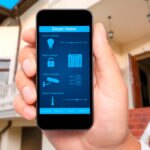Four reasons to put the Internet of Things in your life
One in four users recognizes that he or she has Internet of Things devices because of the savings it generates, while 19% opt for these devices for their convenience and 16% for reasons of security, according to the GSMA study conducted by KRC Research.

When we talk about the Internet of Things we are talking about a home or office that are connected: with an intelligent electrical system where lighting, temperature and appliances such as the washing machine or fridge are connected to the Internet and programmed to improve not only well-being in the home but also to achieve a reduction in electrical bills.
In fact, home automation is implemented in one in four homes in Germany, the UK, Japan, and the US. Twenty-three percent of those already have a security system connected; 24% boast a lighting system; another 24% say their washing machine is connected to the Internet; and another 24% say their thermostat is connected, according to the GSMA study conducted by KRC Research, The Impact of the Internet of Things. The Connected Home.
In the current market, with a connected energy system consumers can save about 20% per month, which can result in savings of up to 250 euros per year.
With these ownership statistics in mind, the data concerning user intentions should be highlighted, given that eight out of ten respondents want to have thermostats and lighting connected; and over six of 10 their vacuum cleaner, the lawn mower, the oven, or the fridge, among other home devices.
For security and protection

One in four users recognizes that he or she has Internet of Things devices because of the savings it generates.
Demand for security systems connected in the home or office is increasing and the main reason is the protection they offer. According to the study, the main benefit of this connection is to be able to warn the head of the family when some danger occurs or the normal routine is altered. Therefore, eight out of ten respondents say they want a connected security system.
These systems use sensors to control when doors or windows open and when there is movement inside a property, whether it is a home or business. In addition, they make it possible to control these functions remotely, using a smartphone. For instance, if you are on a trip and want to give the impression that someone is in the house, you can activate automatic switching of lights at a specific time, or turn or the radio from time to time.
The increase in security provided by these systems receives almost unanimous approval: fifty-seven percent of those who already have it highlight a "significant increase in their feeling of security", while another 42% said that their security sensation had increased a little".
These two first advantages, savings and security, are two of the most valued by consumers, who prioritize connected energy and security. As a matter of fact, following computers, video consoles, smartphones, and tablet PCs, intelligent meters appear to be the most frequently owned connected devices in the home, according to the GSMA study.
For convenience
To be able to remotely control the objects in your home is no longer science fiction. It is the ability to be able to remotely check on an apparatus, its operation, to turn it on or off... we now live in a world in which one no longer has to return to the office to check whether a door has been left unlocked or a machine left on. To relieve the anxiety that occurs when one cannot double-check something is a priceless convenience.

To be able to remotely control the objects in your home is no longer science fiction.
For information
The exchange of information that can be relevant for a specific activity is another factor motivating users to have various devices connected.
For instance, a connected car can detect that its owner and family are travelling and, using a mobile device, automatically switch off light of heating and activate the security system.
Almost all respondents highlight that it is useful for all appliances to be able to communicate and exchange information at all times and without glitches, to generate a specific "lifestyle" in our connected home. Forty-four percent say they are very interested and 45% somewhat interested in this aspect.
As we have seen in this example, the connected car remains one of the most important amount Internet of Things devices. Almost half of the respondents (43%) say they have a connected car, i.e. using satellite navigation, and proof of this growing interest is the space devoted to this in the Mobile World Congress 2015, where many intelligent technology novelties in the automotive world were introduced.
Still, interest for other connected objects is also growing considerably, such as health monitors (68% report they are interested in these devices); activity monitors (63%); and elderly persons' monitors (61%).
Among activity monitors, for instance, respondents highlight the connectivity of the different electrical devices that can determine the probability of a defect or breakdown by sharing their use information. These data may be used to perform a diagnostics and detect the failure with more precision and to offer the manufacturer improvement options for future devices.
The monitoring of health devices also offers key information of the patient for his or her doctor. For instance, a person with diabetes can use a connected blood sugar monitor to conduct regular readings to control his or her sugar and insulin intake. This type of monitoring is also very useful to care for elderly people and babies, to follow their activity and be able to protect them.
Savings, security, convenience, and access to information. There are four main reasons for you to consider entering the world of the Internet of Things.